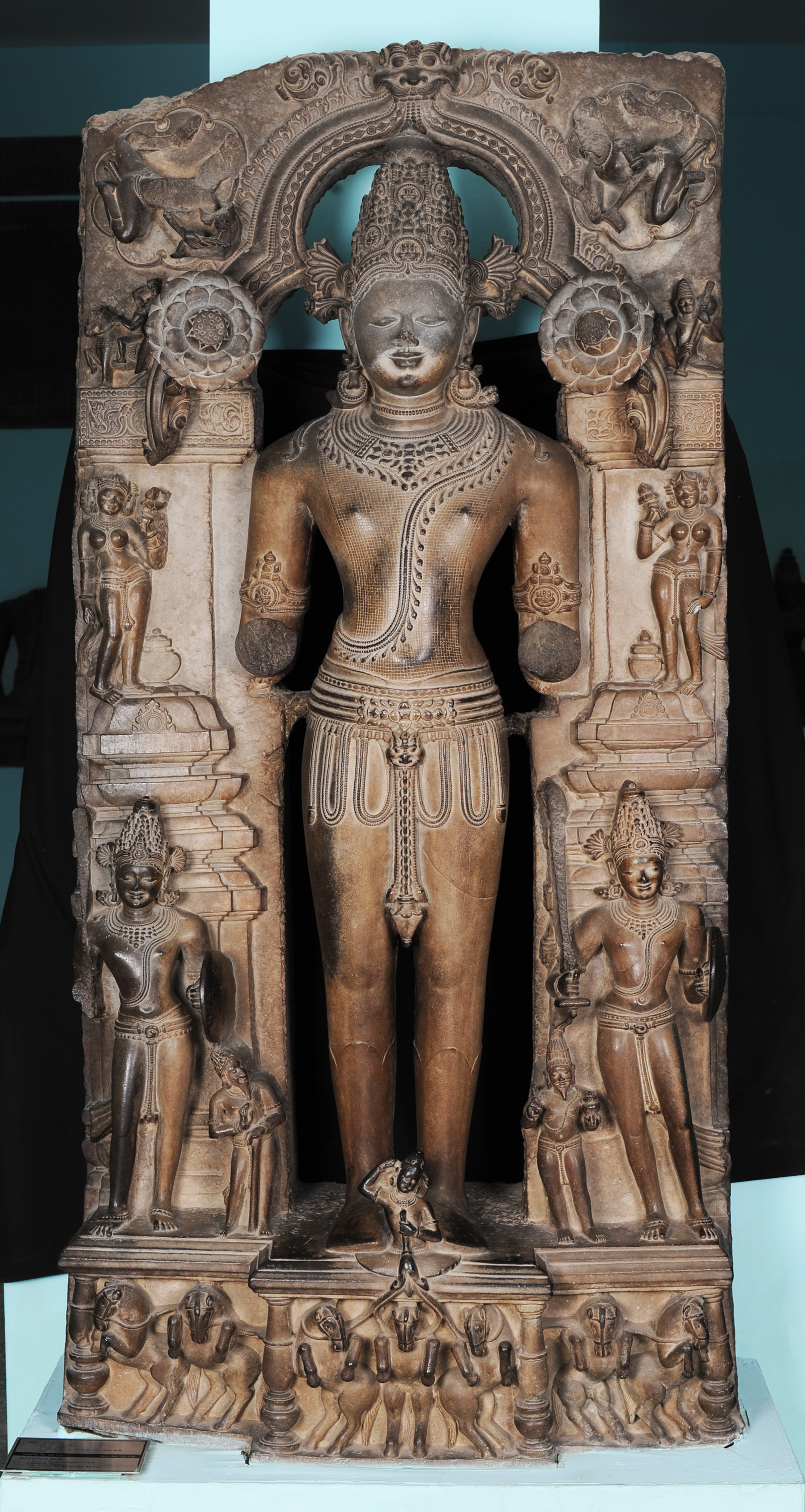Discover, Learn, immerse, Connect
Surya, the Sun God
This sculpture of Surya, the Sun God was made around the 13th century during the rule of the Eastern Ganga Dynasty. It is now located at the National Museum, New Delhi. The cult of Surya was founded at the site by Narasimha I as part of the Eastern Ganga Dynasty (1238-1264 CE).
The stone sculpture of Surya was once a part of the ‘garbhagriha’ or the sanctum sanctorum of the famous Konark Temple in Orissa. It was later shifted to the National Museum, for its safety and better upkeep. The Eastern Ganga Dynasty went down in history for their creation of the Konark or the Sun temple at Puri which is now also a UNESCO World Heritage Site. This architectural marvel was where the sculpture was placed as the temple itself was dedicated to Surya or the Sun God. King Narasimhadeva I, the great ruler of the Ganga dynasty had built this temple with the help of 1200 artisans within a period of 12 years (1243-1255 CE). Konark Temple was designed in the form of a gorgeously decorated chariot mounted on twenty four wheels, each about ten feet in diameter and drawn by seven mighty horses.
A striking feature of the Sun God is that he is often shown in 'northern' or Scythian dress which is a close-fitting coat with high boots, suggesting an influence from Iranian Sun cults. Surya sculptures begin pouring in from around the early centuries of the Christian era. The dagger-carrying 'udichya vesa' images in tunic, girdle and high boots of this early conception were widely different from his contemporary sculptures. The artisans were well versed with the texts of Hinduism from where the iconography of the God was taken.
In the words of the great poet Rabindranath Tagore, "here (Konark) the language of stone surpasses the language of man." These words still resonate with everyone who has visited the Konark Temple. The sculpture of Sun God is two-armed but sadly the forearms have been destroyed. We see the iconography of Surya particularly following the texts which mention the Sun God. Here we see that Surya’s forearms holding two full-blown lotuses have been completely destroyed. Two full-blown lotuses are still in their positions above the shoulders of the deity. Surya, has been represented as riding a chariot driven by seven galloping horses with reins in the hands of his charioteer. There are various decorative details on this sculpture depicting the intricacy of style and method of the artists. The face of the deity seems to glow with inner delight and energy with a subtle smile on his lips. This shows the detail with which this sculpture was made. We also find other figures which have become an important part of the portrayal of the sculpture like the 'Maladharas' showering flowers, veena-playing Gandharva, and an equestrian messenger. We also see two female figures as his consorts, Chhaya and Suvarchasa and two males as his trusted attendants, Danda and Pingala.
Surya was a greatly revered God within the Rig Vedic pantheon. Surya is usually seen driving away the darkness by riding in his chariot across the sky and is sometimes visualized as a white horse or an eagle. A Rig Vedic deity alternating with Vishnu, Surya, the source of light, warmth and life, stood for time and cosmic dynamics. There are ten hymns in praise of Surya in the Rig Veda. He is known by many alternative names and epithets which include Vivasvat (brilliant), Savitr (the nourisher), Bhaskara (light-maker), Dinakara (day-maker), Lokacaksuh (Eye of the World), Graharaja (King of the Constellations), and Sahasra-kirana (1,000 rays). Vishnu, who later largely replaces Surya’s function in the Hindu pantheon is referred to as Surya Narayana in his incarnation as the sun.
Surya and the Adityas, the collective name for the solar deities were especially popular in the early Vedic period. In the Later Vedic period, Surya was replaced in importance by deities such as Shiva and Vishnu. He is celebrated during the harvest festival of Pongal in southern India. Followers of the God are known as 'Sauryas.' Surya appears in the important Gayatri mantra from the Vedas which is recited on a daily basis and is considered holy by the Hindus. As the cult of worship of the sun was prevalent also in other parts (Greece, Rome, Iran) these early images seem to be influenced by extraneous elements, especially Iranian. Later sculptures are more Indianised.
 Government of India
Government of India



